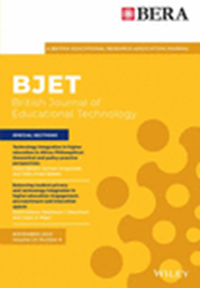Chatbots in tertiary education: Exploring the impact of warm and competent avatars on self-directed learning
Abstract
This study investigates how anthropomorphic AI chatbot avatars, designed in line with the Stereotype Content Model (SCM) dimensions of warmth and competence, influence university students' perceptions of support for self-directed learning (SDL) activities. We examined student responses to two distinct avatars—one projecting warmth and the other projecting competence. Using an Action Design Research (ADR) approach, we evaluated the chatbots across three university courses, incorporating perspectives from students, educators and learning designers. Findings reveal that students perceive the avatars differently. The warm avatar provides a stronger emotional connection, while the competent avatar offers more effective task-oriented learning support. These results highlight the importance of balancing warmth and competence in chatbot design to enhance their perceived usefulness for supporting SDL engagement. The study also supplies rich insights into practical implementation challenges and opportunities from multiple stakeholder viewpoints. Altogether, the research advances our understanding of SCM-informed chatbot design in educational settings and proposes practical principles for developing AI tools that students perceive as helpful, thereby contributing to the field of human–AI interaction.
Practitioner notes
What is already known about this topic
- The potential of AI chatbots to support aspects of self-directed learning (SDL) in higher education is currently being explored.
- User perceptions of AI systems are influenced by anthropomorphic design cues, often understood through dimensions like warmth and competence (related to the Stereotype Content Model—SCM).
- Designing AI educational tools requires considering how different interactional styles (eg, warmth vs. competence) can affect student engagement and perceived usefulness.
What this paper adds
- Empirical insights into students' perceptions of chatbot avatars designed with varying levels of warmth and competence, based on the SCM, and how these perceptions relate to their reported engagement and perceived support for SDL in university courses.
- Evidence that students distinguish between warmth and competence in chatbot avatars, associating warmth with socio-emotional connection and competence with task-related learning support.
- A set of SCM-informed design principles for developing anthropomorphic chatbots intended to be perceived as helpful and engaging for supporting SDL.
- Evidence of integrating educator and designer perspectives (through Action Design Research) to uncover practical implementation factors beyond student perceptions alone.
Implications for practice and/or policy
- Educators can select or advocate for chatbot designs that appropriately balance warmth and competence based on specific pedagogical goals and perceived student needs (eg, more warmth for initial engagement and more competence for complex task support).
- When implementing chatbots for SDL support, institutions should consider designs informed by user perception research (like SCM) to increase the likelihood of student acceptance and perceived value.
- Policy discussions on AI in education should incorporate user-centred design principles, including SCM dimensions, alongside ethical guidelines to support responsible adoption and the development of tools perceived as effective by users.





 求助内容:
求助内容: 应助结果提醒方式:
应助结果提醒方式:


